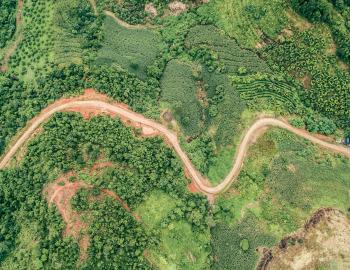Background
- East Asia is composed of China, Japan, Mongolia, and North and South Korea. Watersheds drain from the landmass into the East China Sea, south of which sit both Taiwan and the Philippines. East Asia contains 22% of the world’s population, cultivates 9.2% of the world’s arable land and consumes 37% of the world’s N fertilizer (FAOSTAT, 2010; Streets and Waldhoff, 2000; Zheng et al., 2002). Furthermore, it has experienced unprecedented increases in food and energy demand in the last three decades.
- To support this growth large amounts of N have been added into this region, especially in China, Japan and South Korea. This can be mainly attributed to increasing fertiliser use to increase crop yields. Fertilizer N application plays a vital role in ensuring food and energy security, however there is often a low level of fertilizer recovery with associated environmental impacts. With the increase of human population and economic development in this region, reactive N pollution due to fertilizer use and fossil fuel combustion is likely to increase further, along with losses from animal manures and issues relating to the management of sewage. It is therefore likely that East Asia will be an even larger global hotspot for N problems in the future.
Role in Towards INMS
- The countries in the East Asia Demonstration have been facing similar challenges in recent decades, associated with rapidly growing populations and changing diets (i.e. increasing meat consumption). Therefore, the work of the INMS community is benefiting this region by providing a platform for exchanging knowledge/information on fundamental nitrogen processes, and policies to reduce nitrogen inputs and abate issues caused by excess nitrogen within the region.
Outputs
- The INMS project is improving understanding of the global/regional N cycle and investigate/test practices and management policies at the regional, national and local levels. A key aim of this work is to reduce negative impacts of Nr on the ecosystems, environment and human health. As a region with excessive Nr and the largest Nr use worldwide, East Asia needs to be well informed on how to manage N. Implementation of N management strategies are needed that address negative effects of excess Nr whilst not impacting economic development. The demonstration activity, which delivers conclusion refining approaches to national/regional assessments and improves understanding of regional N cycle, is addressing these challenges and providing opportunities for East Asia.
- To achieve these outputs, we are designing a common methodology for our regional demonstration to refine regional Nr assessments and improve understanding of the regional N cycle. This is important since a common methodology will insure that the results from different regions are comparable. This is of course the basis of a global N assessment and global N management. First of all, we have to obtain good quality data on both human activities and N cycling parameters. This requires the examination of the N flows by source, sector and loss pathway, at different scales. To identify and quantify uncertainties further focused monitoring at a smaller scale may be required.
For more information on the partners that are part of this Regional Demonstration please see our Regional Case Study Partners page.

